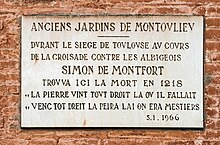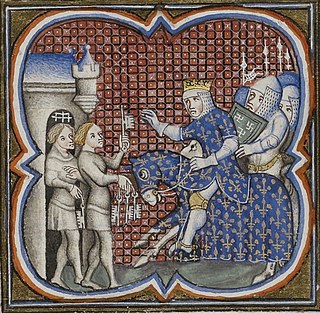
Louis VIII, nicknamed The Lion, was King of France from 1223 to 1226. As a prince, he invaded England on 21 May 1216 and was excommunicated by a papal legate on 29 May 1216. On 2 June 1216, Louis was proclaimed "King of England" by rebellious barons in London, though never crowned. He soon seized half the English kingdom but was eventually defeated by the English. After the Treaty of Lambeth, he was paid 10,000 marks, pledged never to invade England again, and was absolved of his excommunication.

The Albigensian Crusade or Cathar Crusade (1209–1229) was a military and ideological campaign initiated by Pope Innocent III to eliminate Catharism in Languedoc, what is now southern France. The Crusade was prosecuted primarily by the French crown and promptly took on a political aspect. It resulted in the significant reduction of practicing Cathars and a realignment of the County of Toulouse with the French crown. The distinct regional culture of Languedoc was also diminished.

Simon de Montfort, 5th Earl of Leicester, known as Simon IVde Montfort and as Simon de Montfort the Elder, was a French nobleman and knight of the early 13th century. He is widely regarded as one of the great military commanders of the Middle Ages. He took part in the Fourth Crusade and was one of the prominent figures of the Albigensian Crusade. Montfort is mostly noted for his campaigns in the latter, notably for his triumph at Muret. He died at the Siege of Toulouse in 1218. He was Seigneur of Montfort from 1188 to his death and Earl of Leicester in England from 1204. He was also Viscount of Albi, Béziers and Carcassonne from 1213, as well as Count of Toulouse from 1215.
The count of Toulouse was the ruler of Toulouse during the 8th to 13th centuries. Originating as vassals of the Frankish kings, the hereditary counts ruled the city of Toulouse and its surrounding county from the late 9th century until 1270. The counts and other family members were also at various times counts of Quercy, Rouergue, Albi, and Nîmes, and sometimes margraves of Septimania and Provence. Count Raymond IV founded the Crusader state of Tripoli, and his descendants were also counts there. They reached the zenith of their power during the 11th and 12th centuries, but after the Albigensian Crusade the county fell to the kingdom of France, nominally in 1229 and de facto in 1271.

Raymond VI was Count of Toulouse and Marquis of Provence from 1194 to 1222. He was also Count of Melgueil from 1173 to 1190.

Raymond VII was Count of Toulouse, Duke of Narbonne and Marquis of Provence from 1222 until his death.
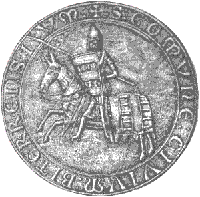
Raymond Roger Trencavel was a member of the noble Trencavel family. He was viscount of Béziers and Albi, and viscount of Carcassonne and the Razès.
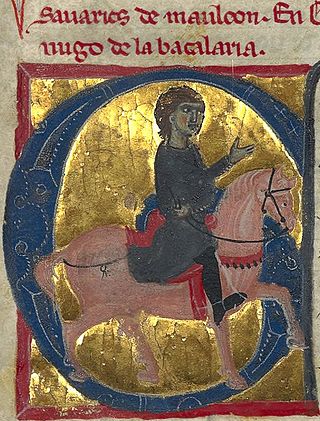
Savari de Mauléon was a French soldier, the son of Raoul de Mauléon, Viscount of Thouars and Lord of Mauléon.
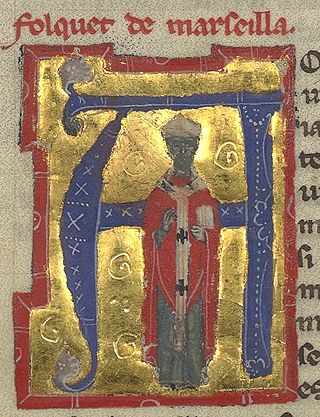
Folquet de Marselha came from a Genoese merchant family who lived in Marseille. He is known as a troubadour, and then as a fiercely anti-Cathar bishop of Toulouse.

The Battle of Muret, fought on 12 September 1213 near Muret, 25 km south of Toulouse, was the last major battle of the Albigensian Crusade and one of the most notable pitched battles of the Middle Ages. Although estimates of the sizes of the respective armies vary considerably even among distinguished modern historians, it is most well known for a small force of French knights and crusaders commanded by Simon de Montfort the Elder defeating a much larger allied army led by King Peter II of Aragon and Count Raymond VI of Toulouse.
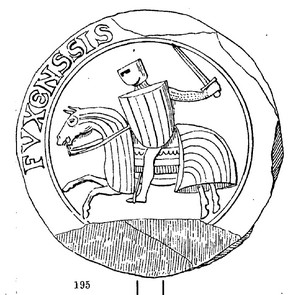
Roger Bernard II, called the Great, was the seventh count of Foix from 1223 until his death. He was the son and successor of the count Raymond-Roger and his wife Philippa of Montcada.

Sancho, also spelled Sanç or Sanche, was a Catalano-Aragonese nobleman and statesman, the youngest son of Queen Petronilla of Aragon and Count Raymond Berengar IV of Barcelona. He was at different times the count of Cerdanya (c.1175–1188), Provence (1181–1185), Gévaudan, Rodez and Carlat (1183–1185), and Roussillon (1208–1212). He served as the regent of Provence from 1209 until 1218 during the minority of Count Raymond Berengar IV, and as regent of Aragon from 1214 until 1218, during the minority of King James I.

Lavelanet is a commune in the Ariège department in the Occitanie region in southwestern France.
Guy de Montfort was the Count of Bigorre from 6 November 1216 to 1220 in right of his wife, Petronilla. He was a son of Simon de Montfort, 5th Earl of Leicester and Alice of Montmorency.
Alix de Montmorency was a French noblewoman. Her parents were Bouchard V de Montmorency and Laurette, daughter of Baldwin IV, Count of Hainaut and Alice of Namur.
Guy de Montfort was the younger son of Simon de Montfort and Amicia, sister of Robert FitzPernel, Earl of Leicester.
Bertran Folcon d'Avignon or Bertran Folco d'Avinhon was a Provençal nobleman and troubadour from Avignon. He was a faithful partisan of Raymond VI and Raymond VII of Toulouse in Provence, and participated in the wars against the Albigensian Crusade. He was inside the city during the siege of Beaucaire in 1216. In 1226 Raymond VII appointed him bailiff of Avignon.

AimeryIII, known in Spanish as Aimerico Pérez de Lara, was the Viscount of Narbonne from 1194 until his own death. He was a member of the House of Lara. Throughout his reign he had to navigate competing claims of suzerainty over him and until 1223 his reign was dominated by the Occitan War. He participated unenthusiastically on the side of the crusaders, but retained his viscounty, which he passed on to his son.
Petronilla of Bigorre or Petronilla of Comminges was ruling Countess of Bigorre between 1194 and 1251. She was the only child of Bernard IV, Count of Comminges, and his wife Stephanie-Beatrice IV, Countess of Bigorre. Petronilla succeeded her mother in 1194 as Countess of Bigorre; she was also Viscountess of Marsan and Nébouzan through further successions. She reigned as countess for fifty-seven years, in which time she was married five times.

The Château Narbonnais was a castle of the Counts of Toulouse on the west side of the city Toulouse. The castle featured prominently in the Cathar wars.

